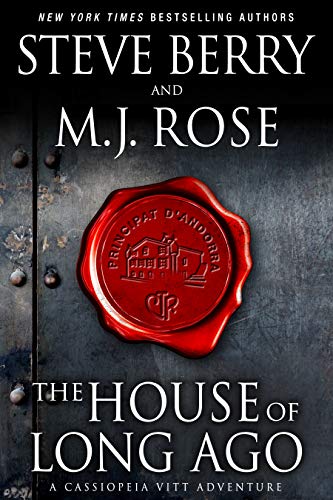

The time has come for Cassiopeia Vitt to sell her ancestral home. It sits on a Spanish bluff by the Mediterranean Sea, and bears the name Casa de Hace Mucho Tiempo, House of Long Ago. Trapped inside its walls are memories from a time when Cassiopeia was growing from a rebellious adolescent into a thoughtful young woman—regretful times when she often found herself estranged from her parents. Also inside are fifteen paintings, each one a masterpiece, together representing an investment in the tens of millions of euros—her father’s private art collection—which she intends to donate to museums. But when an art expert declares all fifteen paintings fake, and suggests that her father may have been involved with something illegal, she embarks on a quest to find answers.
From a secret repository in Andorra, to a mysterious yacht in the Mediterranean, then finally onto the streets of Paris and a horrific reminder from World War II, Cassiopeia must battle every step of the way to stay alive—a fight that will finally bring her face to face with the truth about the House of Long Ago.
Excerpt: The House of Long Ago
From New York Times bestselling authors Steve Berry and M.J. Rose, comes THE HOUSE OF LONG AGO—the third Cassiopeia Vitt Adventure novella out this week! So excited to share an excerpt below!

That had been his mantra—to honor the sacred in this world.
And seeing that beautiful mysterious lady created by Leonardo da Vinci follow me around the room, along with the reverence my father paid it, I started to understand what he meant. On his tombstone I had He honored the sacred in this world engraved.
It seemed fitting.
And now as I walked Miguel through the gallery, I thought how well my father had done just that.
“According to the last estimate,” I said to Miguel, “this collection is worth at least fifty million euros. As I told you on the phone, no matter how well protected this gallery is and how secretive we’ve been about having such a valuable collection on the grounds, I can’t leave it here anymore. Not only because of my fear for its safety, but because I believe these paintings should be enjoyed by all. I know my father would be happy I’m splitting them between the two museums he loved the most.”
“I’m overwhelmed,” Miguel said as he forced himself to stop staring at the paintings. “Muchas gracias, Cassiopeia. Everyone who knew your father said he was a generous man. He’d be so proud of you.”
I was quiet for a few seconds, afraid that if I spoke my voice might crack. Finally, I said, “I hope he would be pleased with my decision. I miss him a lot. But less when I’m here.” I gestured to the paintings. “Would you like a tour?”
“Absolutely.”
We started to the right of the door at a Picasso. It had been painted during his Rose Period, when he used cheerful colors to explore the world of harlequins, clowns, and circus performs. 1904 to 1906, if I remembered correctly. The last time he painted exclusively in a figurative style. I told Miguel how this one featured both a harlequin and an acrobat. With clear reverence, Miguel approached the canvas and stood in silence.
“It’s magnificent,” he said.
I agreed.
He moved from the Picasso to the next painting, a Klimt of an apple tree filled with golden fruit.
“I was with him when we bought this one,” I said. “In Paris at the Hammerstein Gallery. He did a lot of business there. I was about ten, but I remember the day clearly. The gallery owner had a dog, a little apricot poodle named Maxine, and I played with her while my father bought art.”
“I assume you have the bills of sales and paperwork for all of these paintings?”
“I don’t, but our family lawyer, Esmerelda Fortuna, has everything.”
We moved from the Klimt to a Joan Miró, one of his surrealistic dream paintings from the 1920s. Then Miguel stood before the oldest in the collection, an amazing Georges de La Tour of a young girl reading a book by candlelight, the canvas aglow with illumination.
“We would need to—”
He cocked his head and moved closer to the painting.
After a few moments he backed up and inspected it from a distance.
He repeated those motions several times.
“What is it?” I asked.
He stepped back to the Picasso.
“Give me a moment,” he said with a frown that suggested something was wrong.
He made his way back around the gallery, inspecting each painting more carefully, again stepping back, then forward.
He moved from the Klimt, to the Picasso, to another Picasso, a Dalí, the Joan Miró, a Goya, two Juan Gris, the Georges de La Tour, a Monet, the Chagall, a Georges Seurat, a Georges Braque a Piet Mondrian and finally, the Paul Signac.
The collection was a curious cross section from vastly different periods. True, the artists were all European, but my father had no particular style favorite. Nor a time frame, except that nothing in the collection had been painted after 1930.
All that mattered was that the work spoke to him.
Otherwise, it is meaningless.
“What is it?” I asked again.
Miguel turned to me. His face was pale and he was biting his bottom lip. “I’m not sure how to tell you this, but not one of these paintings is authentic.”
He paused.
“Every one of them is a fake.”
Subscribe for Updates:
















 by
by